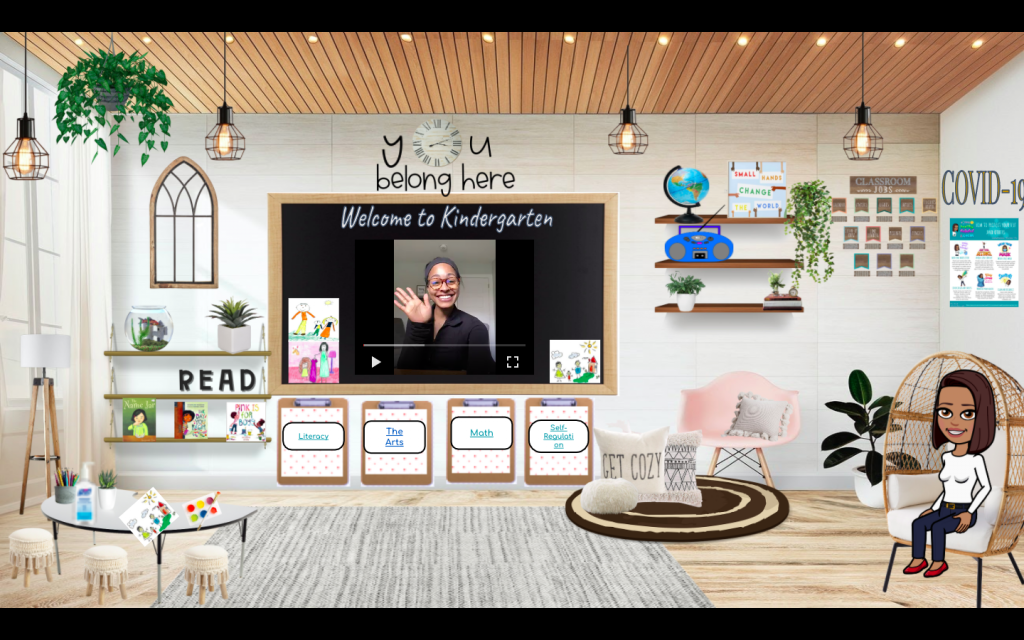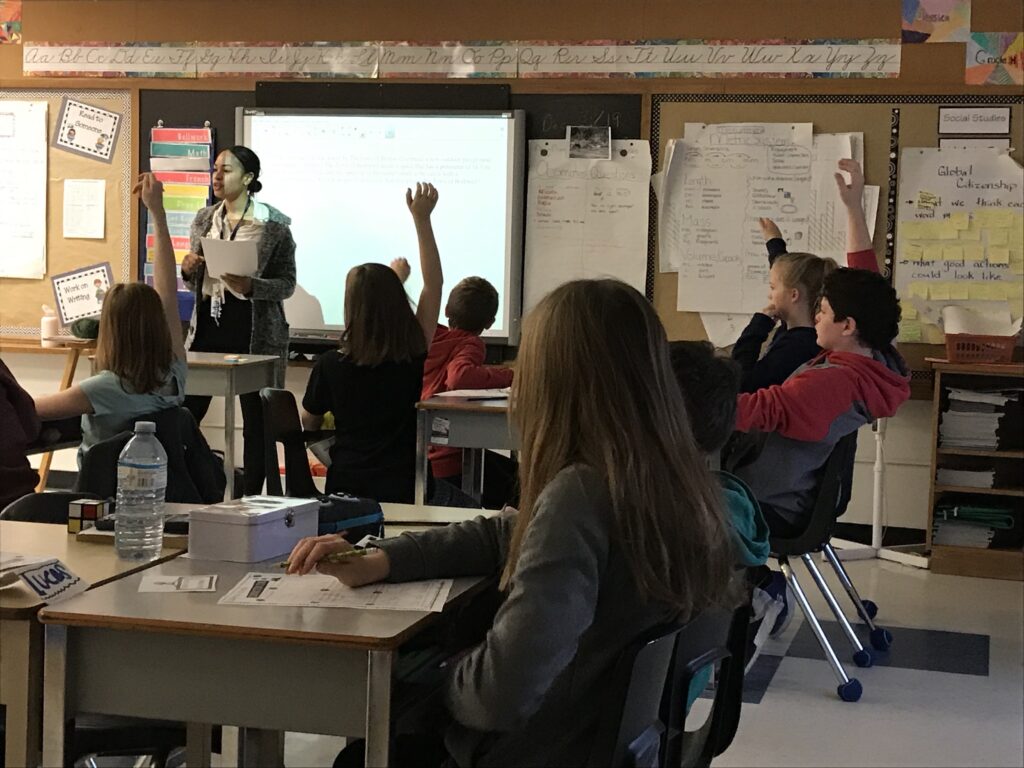September, 21st, 2020
Bitmoji Classroom Creations

During these unprecedented times, students have been given the chance to show how resilient they are when it comes to dealing with a change in their classroom environment. Although it was challenging to adapt at first, I took this time off as a learning opportunity to become more knowledgeable and proficient in navigating through online learning. As a future educator, I believe it is essential that no matter your setting you must be transparent with students and parents when it comes to assessment and expectations, communicate with all members involved in the students learning, and remain organized and flexible. All qualities are even more essential with online learning as the face-to-face communication is removed. I worked one-on-one with my eight year-old sister last year to help her complete the assignments that were due via google classroom. As I guided her through the programming I noticed the gaps in her learning that resulted from ineffective use of the applications. I made it my responsibility and goal to educate myself in the two commonly used and effective online platforms Google Classroom and SeeSaw to ensure these gaps would never be an issue in my future remote classroom.
I wanted to take the time to know these two online platforms in particular because I found they allow for inclusion in the classroom and you are given the opportunity to build relationships with your students and parents with the amount of communication the applications allow. SeeSaw gives you the opportunity to differentiate instruction and assign different versions of the same assignment to students without having them perceive this as exclusion. Google Classroom allows you to “app-smash” which is a term used for integrating other application such as SeeSaw, Google Slides to create Bitmoji Classrooms, or even applications such as QuaverSEL an amazing socio-emotional and music application, into the Google Classroom. My goal was to be able to create a a virtual classroom that provides choice through clickable decor that redirects you to educational resources, displays student work and provides resources that are relevant to my students interests. I also felt it was important to share in a video what we would have learned during synchronous learning sessions, for students to review before completing the activity, in addition to keeping the parents in the child’s learning to ensure they can provide the help the student needs.
December, 18th, 2020
Bullying Prevention in my Classroom
Policy/Program Memorandum No. 144: Bullying Prevention and Intervention
It is of the upmost importance to create a positive school climate, where all members feel safe and included. I unfortunately witnessed two students in my practicum classroom bullying a marginalized student, which I found out was a repeated deliberated act of violence against another classmate. As the educator and the witness of the final attack, I knew my role was to diffuse the situation, ensure that all students remained safe and that the administration was contacted immediately for assistance.
After witnessing this, I referred to the Policy no. 144, to research appropriate strategies to use to prevent bullying, but also to raise awareness at this school about bullying, to ensure that all students felt safe at school and in their community.

One of the strategies I learned from this document, was the importance of implementing ways in which students could feel comfortable coming to you to report bullying that was occurring, as some students may not want to come forward to administration in case of reprisal. After this incident, I realized many students knew about this prearranged attack but did not want to inform a teacher. With this information, I conducted a brief informative discussion on being kind to our peers and as a class we outlined strategies and procedures that explained the roles of the teacher and students and with this, mindfulness activities came into the classroom to provide students a confidential way to communicate. The policy also highlighted the importance of promoting inclusivity and equity into daily curriculum, and focusing on building health relationships by including bullying prevention strategies. This document served as an inspiration for my antiracism in sports lesson, and with more time at this school, would have hopefully transitioned into discussing social inequalities such as bullying in the schools and in their lives. These strategies were to be used to ensure all students felt safe and included, in hopes to limit this behaviour in the future. As a result, students demonstrated their trust in me as their educator as they began to explain situations where they felt victimized by their peers. This shows the importance of establishing positive relationships with your students, as students will begin to feel as though they have someone to turn to for support in times of need.
Another strategy I learned was to include school climate surveys into the schools and classrooms in order to evaluate and monitor bullying. A strategy that I did not notice while completing my placement. I recommended this strategy to my associate teacher, as I believe this would be a beneficial tool to not only monitor bullying, but if done correctly, could build self-monitoring skills in students. If more time was allotted for practicum, I would have ensured the school had survey templates for classrooms to use every year.
In the future, I believe in order to try to prevent this attack from happening, I once again will stress the importance of building relationships with my students. Establishing these relationships will ensure that I am aware of the issues students are facing, and develop strategies with the students before the situation escalades to this level.